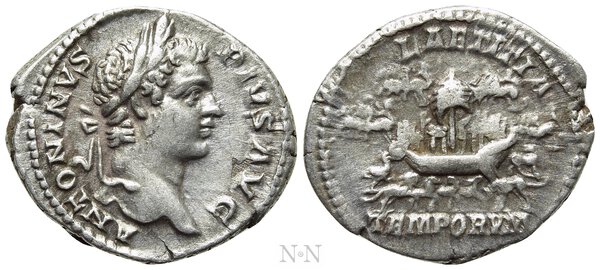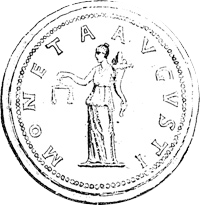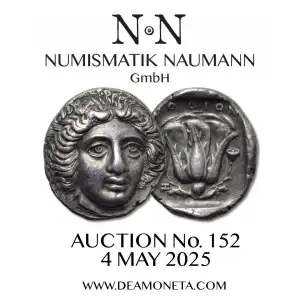The Circus Maximus


CARACALLA (198-217). Denarius. Rome.
Obv: ANTONINVS PIVS AVG.
Laureate head right.
Rev: LAETITIA / TEMPORVM.
Galley under sail in Circus; four quadrigae above; various beasts and fowl below: ostrich, lion, zebra, bear, stag, bull and bear.
RIC 157.
This denarius commemorates Caracalla's victory over the Parthians, celebrated with seven days of games in the Circus Maximus, with the participation of a multitude of fighters and animals. The original wooden construction of this building dates from the time of the Tarquinii, in the second half of the 6th century. The first masonry structures and use of the building for competitions did not occur until the 2nd century, then under Julius Caesar it took its final form. The Circus Maximus was restored several times and completed by Augustus, who added an Egyptian obelisk still visible on some later Caracalla coins.
Condition: Very fine.
Weight: 3.48 g.
Diameter: 21 mm.
Obv: ANTONINVS PIVS AVG.
Laureate head right.
Rev: LAETITIA / TEMPORVM.
Galley under sail in Circus; four quadrigae above; various beasts and fowl below: ostrich, lion, zebra, bear, stag, bull and bear.
RIC 157.
This denarius commemorates Caracalla's victory over the Parthians, celebrated with seven days of games in the Circus Maximus, with the participation of a multitude of fighters and animals. The original wooden construction of this building dates from the time of the Tarquinii, in the second half of the 6th century. The first masonry structures and use of the building for competitions did not occur until the 2nd century, then under Julius Caesar it took its final form. The Circus Maximus was restored several times and completed by Augustus, who added an Egyptian obelisk still visible on some later Caracalla coins.
Condition: Very fine.
Weight: 3.48 g.
Diameter: 21 mm.
Watch:
Starting price:
€ 400
Current bid:
€ 425
€
B.P.: 18.90%
Closing on: 2025-05-04 16:00:00 Roma time


